Accepted Scientific Name: Gymnocalycium bruchii (Speg.) Hosseus
Revista Centro Estud. Farm. 2, no. 6: reprint pp. 16, 22. 1926 Fedde, Rep. Spec. Nov. 27: 256. 1930
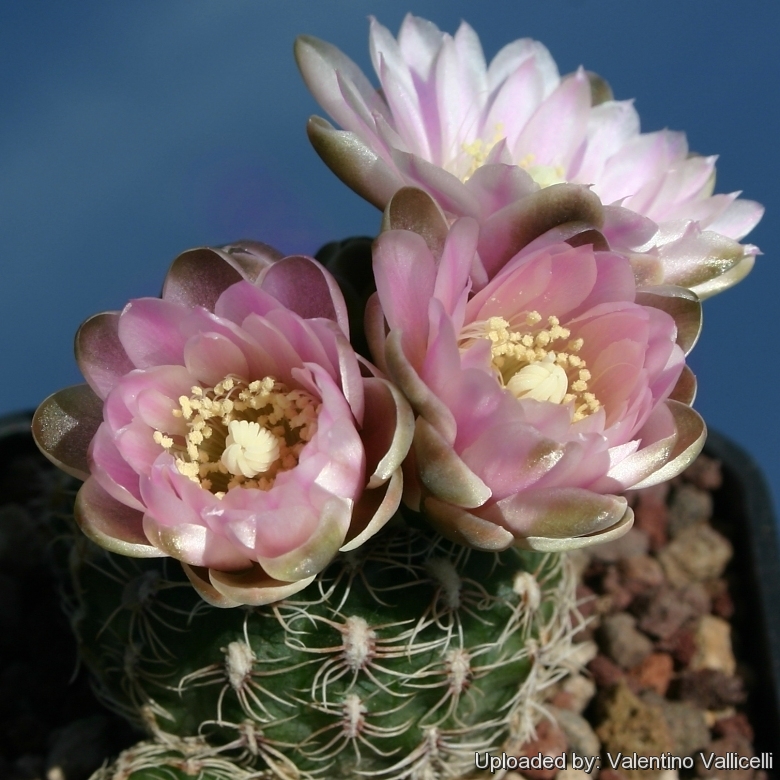
Astrophytum bruchii (Gymnocalycium bruchii) Photo by: Valentino Vallicelli
This is one of the most cold-tolerant South American species. It can grow outdoors, and is hardy to -15° C or less.
Origin and Habitat: Argentina. Endemic to the Córdoba and San Luis provinces.
Habitat: Inhabits a wide range of environments and altitudes.
Synonyms:
See all synonyms of Gymnocalycium bruchii
back
Accepted name in llifle Database:Gymnocalycium bruchii (Speg.) HosseusRevista Centro Estud. Farm. 2, no. 6: reprint pp. 16, 22. 1926 Fedde, Rep. Spec. Nov. 27: 256. 1930Synonymy: 50
back
Description: Gymnocalycium bruchiiSN|14835]]SN|14835]] is a miniature clumping succulent that clusters when small. This species is very variable and has received many names.
Stems: Flattened, blue-green, thick growing up to 4 cm in diameter, 6 cm long.
Spines: White bristly, straight or curved
Flowers: Bell to funnel-shaped, 6 cm wide, with an unusual shade of lavender-white in early spring, followed by green fruits.
Remarks: This slow-growing plant will eventually form clusters up to 15 cm across.
Subspecies, varieties, forms and cultivars of plants belonging to the Gymnocalycium bruchii group
Bibliography: Major references and further lectures
1) Edward Anderson “The Cactus family” Timber Press, Incorporated, 2001
2) James Cullen, Sabina G. Knees, H. Suzanne Cubey "The European Garden Flora Flowering Plants: A Manual for the Identification of Plants Cultivated in Europe, Both Out-of-Doors and Under Glass" Cambridge University Press, 11/Aug/2011
3) David R Hunt; Nigel P Taylor; Graham Charles; International Cactaceae Systematics Group. "The New Cactus Lexicon" dh books, 2006
4) N. L. Britton, J. N. Rose “The Cactaceae. Descriptions and Illustrations of Plants of the Cactus Family.” Volume 4, The Carnegie Institution of Washington, Washington 1923, page. 41
5) Curt Backeberg “Die Cactaceae: Handbuch der Kakteenkunde” Gustav Fischer Verlag, Stuttgart New York 1982–1985
6) British Cactus & Succulent Journal, Volume 23, Page 174, Cactus & Succulent Society, 2005
More...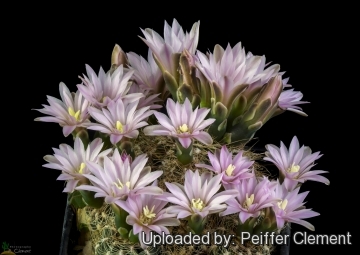 Astrophytum bruchii (Gymnocalycium bruchii) Photo by: Peiffer Clement
Astrophytum bruchii (Gymnocalycium bruchii) Photo by: Peiffer Clement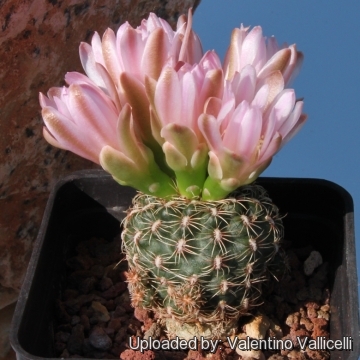 Astrophytum bruchii (Gymnocalycium bruchii) Photo by: Valentino Vallicelli
Astrophytum bruchii (Gymnocalycium bruchii) Photo by: Valentino Vallicelli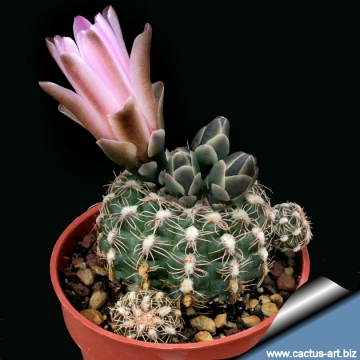 Astrophytum bruchii (Gymnocalycium bruchii) Photo by: Cactus Art
Astrophytum bruchii (Gymnocalycium bruchii) Photo by: Cactus Art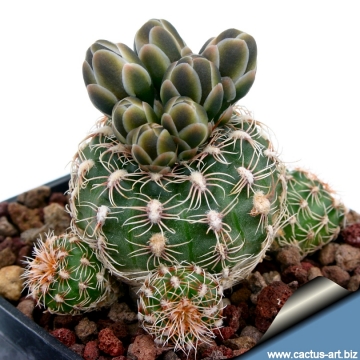 Astrophytum bruchii (Gymnocalycium bruchii) Photo by: Cactus Art
Astrophytum bruchii (Gymnocalycium bruchii) Photo by: Cactus Art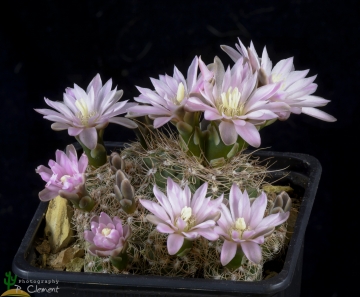 Astrophytum bruchii (Gymnocalycium bruchii) Photo by: Peiffer Clement
Astrophytum bruchii (Gymnocalycium bruchii) Photo by: Peiffer Clement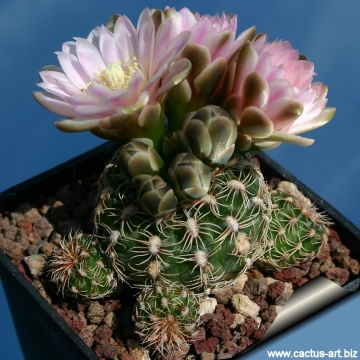 Astrophytum bruchii (Gymnocalycium bruchii) Photo by: Cactus Art
Astrophytum bruchii (Gymnocalycium bruchii) Photo by: Cactus Art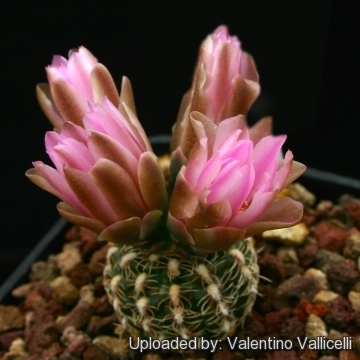 Astrophytum bruchii (Gymnocalycium bruchii) Photo by: Valentino Vallicelli
Astrophytum bruchii (Gymnocalycium bruchii) Photo by: Valentino Vallicelli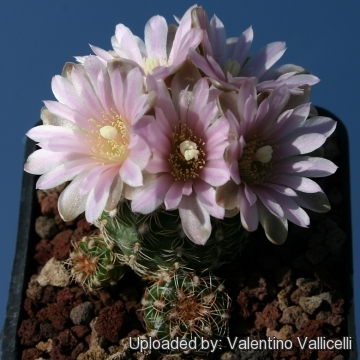 Astrophytum bruchii (Gymnocalycium bruchii) Photo by: Valentino Vallicelli
Astrophytum bruchii (Gymnocalycium bruchii) Photo by: Valentino VallicelliCultivation and Propagation: Gymnocalycium bruchiiSN|14835]]SN|14835]] is a summer grower species that is easy to cultivate. It is one of the most cold-tolerant South American species. It can grow outdoors and is hardy to -15° C or even less.
Growth rate: It is a relatively rapidly growing and easily flowering species that will make clumps given the best conditions.
Soils: It likes very porous standard cactus mix soil. Prefer a low pH compost, avoid substrata rich in limestone; otherwise growth will stop altogether.
Repotting: Use pot with good drainage.
Watering: Needs moderate to copious waterings in summer, but do not overwater (Rot prone), keep dry in winter.
Fertilization: Feed with a high potassium fertilizer in summer.
Hardiness: Reputedly very resistant to frost if kept on the dry side prior to, and during, cold weather (hardy to -15 C ° C, or less for short periods).
Exposition: The plant tolerates extremely bright situations but enjoys filtered sunlight or afternoon shade, inside it needs bright light, and some direct sun. Tends to bronze in strong light, which encourages flowering and heavy spine production.
Uses: It is an excellent plant for container growing. It always looks good and stays small. It look fine in a cold greenhouse and frame or outdoor in a rockery.
Pests & diseases: It may be attractive to a variety of insects, but plants in good condition should be nearly pest-free, particularly if they are grown in a mineral potting-mix, with good exposure and ventilation. Nonetheless, there are several pests to watch for:
- Red spiders: Red spiders may be effectively rubbed up by watering the plants from above.
- Mealy bugs: Mealy bugs occasionally develop aerial into the new growth among the wool with disfiguring results, but the worst types develop underground on the roots and are invisible except by their effects.
- Scales: Scales are rarely a problem.
- Rot: Rot it is only a minor problem with cacti if the plants are watered and “aired” correctly. If they are not, fungicides won't help all that much.
Propagation: Division, direct sow after last frost. Seeds germinate in 7-14 days at 21-27° C in spring, remove gradually the glass cover as soon the plants will be well rooted (ca 1-2 weeks) and keep ventilated, no full sun for young plants! To make a cutting twist off a branch and permit it to dry out a couple of weeks, lay it on the soil and insert the stem end partially into the soil. Try to keep the cutting somewhat upright so that the roots are able to grow downward.
More...
Your Photos
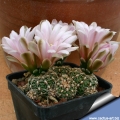
by Cactus Art

by Valentino Vallicelli




















